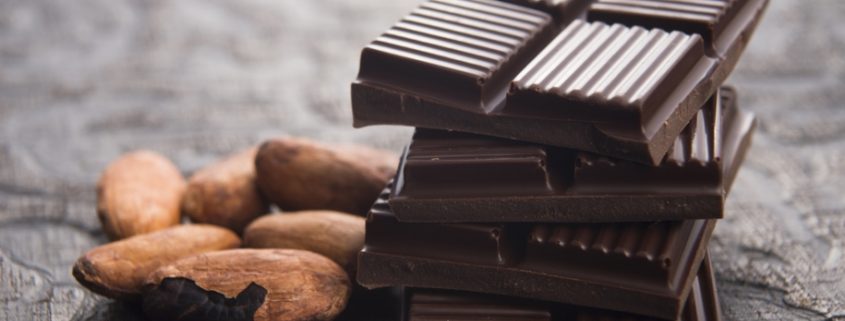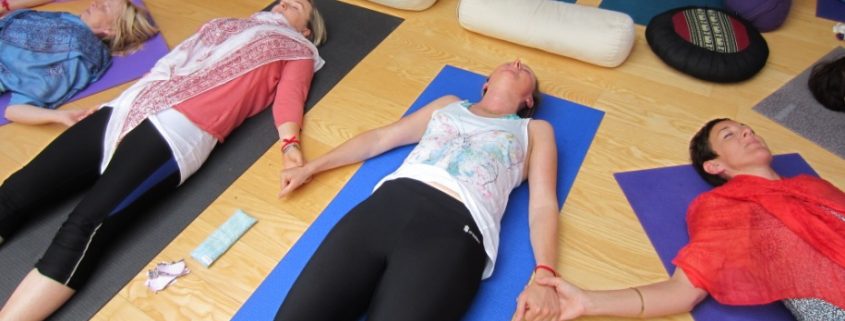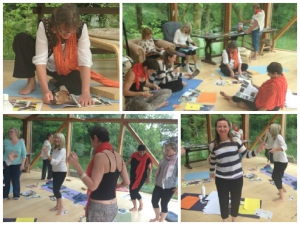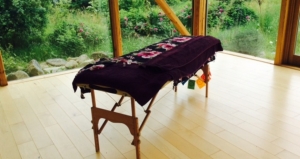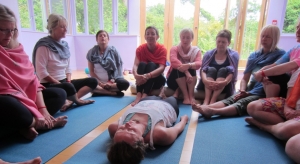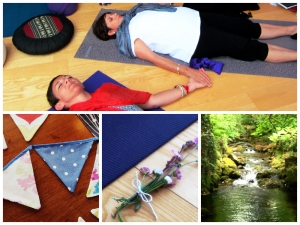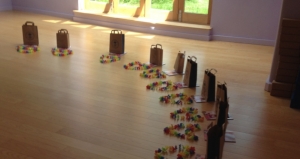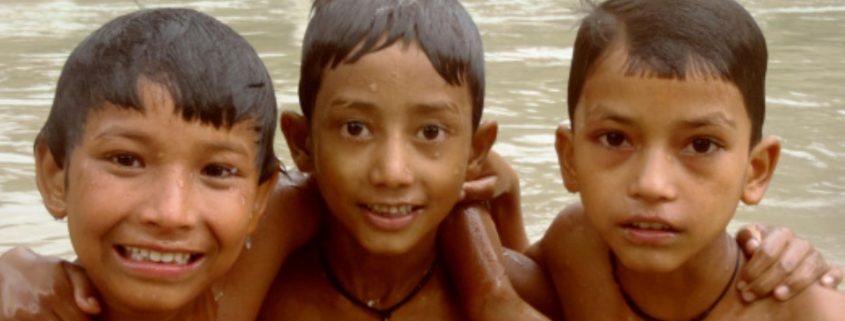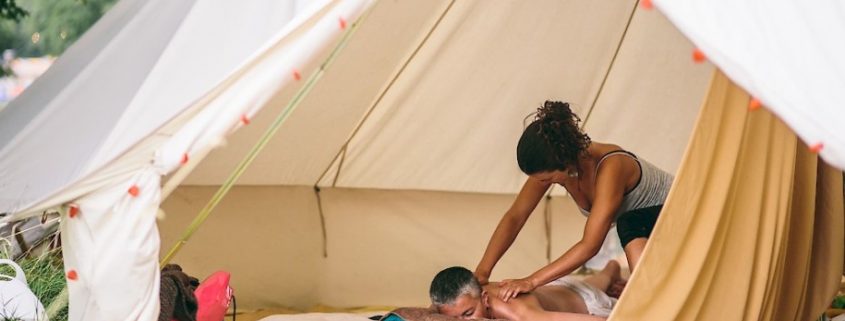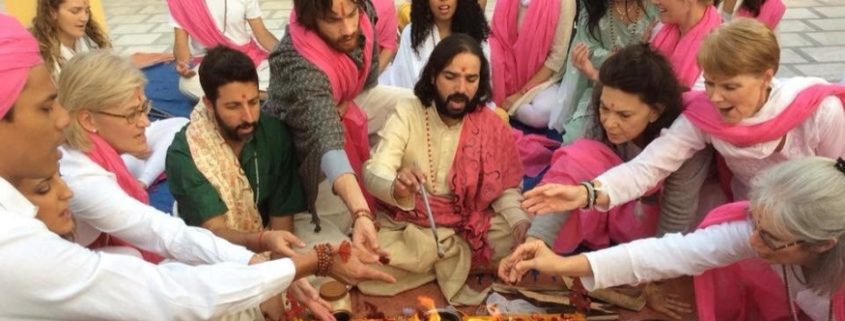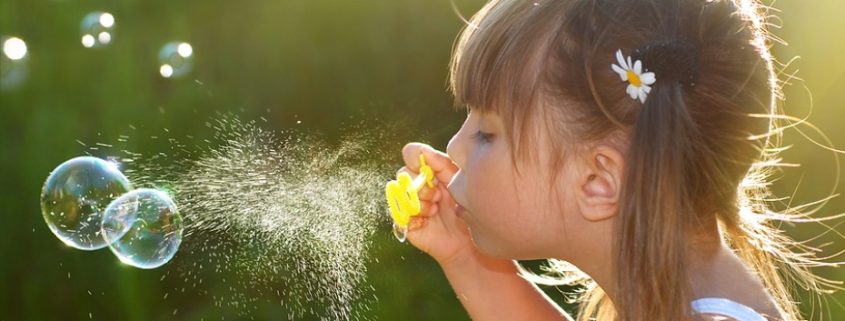My yoga students raised some very good questions at class last night regarding breathing. Why do we get into bad habits? When do we go from breathing properly to taking on these bad habits? What is the proper way to breath? How should it feel in the body?
As I prepared to write this post on the subject of breathing, I came across this comprehensive and useful article. I thought it would be beneficial to share this informative piece covering the importance of oxygen, the importance of breathing properly, the problem with fast and shallow breathing, the importance of breathing through the nose.
The Importance of Breathing
Breathing is important for two reasons. It is the only means to supply our bodies and its various organs with the supply of oxygen which is vital for our survival. The second function of breathing is that it is one means to get rid of waste products and toxins from the body.
Why Is Oxygen So Vital?
Oxygen is the most vital nutrient for our bodies. It is essential for the integrity of the brain, nerves, glands and internal organs. We can do without food for weeks and without water for days, but without oxygen, we will die within a few minutes. If the brain does not gets proper supply of this essential nutrient, it will result in the degradation of all vital organs in the body.
The brain requires more oxygen than any other organ. If it doesn’t get enough, the result is mental sluggishness, negative thoughts and depression and, eventually, vision and hearing decline. Old people and those whose arteries are clogged often become senile and vague because oxygen to the brain is reduced. They get irritated very quickly.
Poor oxygen supply affects all parts of the body. The oxygen supply is reduced to all parts of the body as we get older due to poor lifestyle. Many people need reading glasses and suffer hearing decline in old age.
When an acute circulation blockage deprives the heart of oxygen, a heart attack is the result. If this occurs to the brain, the result is a stroke.
For a long time, lack of oxygen has been considered a major cause of cancer. Even as far back as 1947, work done in Germany showed that when oxygen was withdrawn, normal body cells could turn into cancer cells.
Similar research has been done with heart disease. It showed that lack of oxygen is a major cause of heart disease, stroke and cancer. The work done at Baylor University in the USA has shown that you can reverse arterial disease in monkeys by infusing oxygen into the diseased arteries.
Thus, oxygen is very critical to our well-being, and any effort to increase the supply of oxygen to our body and especially to the brain will pay rich dividends. Yogis realised the vital importance of an adequate oxygen supply thousands of years ago. They developed and perfected various breathing techniques. These breathing exercises are particularly important for people who have sedentary jobs and spend most of the day in offices. Their brains are oxygen starved and their bodies are just ‘getting by’. They feel tired, nervous and irritable and are not very productive. On top of that, they sleep badly at night, so they get a bad start to the next day continuing the cycle. This situation also lowers their immune system, making them susceptible to catching colds, flu and other ‘bugs’.
Oxygen Purifies the Blood Stream
One of the major secrets of vitality and rejuvenation is a purified blood stream. The quickest and most effective way to purify the blood stream is by taking in extra supplies of oxygen from the air we breathe. The breathing exercises described in here are the most effective methods ever devised for saturating the blood with extra oxygen.
Oxygen burns up the waste products (toxins) in the body, as well as recharging the body’s batteries (the solar plexus). In fact, most of our energy requirements come not from food but from the air we breathe.
By purifying the blood stream, every part of the body benefits, as well as the mind. Your complexion will become clearer and brighter and wrinkles will begin to fade away. In short, rejuvenation will start to occur.
Medical Science Verifies Oxygen’s Importance
Scientists have discovered that the chemical basis of energy production in the body is a chemical called Adenosine Triphosphate (ATP). If something goes wrong with the production of ATP, the result is lowered vitality, disease and premature ageing.
Scientists have also discovered that oxygen is critical for the production of ATP; in fact, it is its most vital component.
Yoga permits us to tap into this vital nutrient.
Importance of Healthy Breathing
We know how to breathe. It is something that occurs to us automatically, spontaneously, naturally. We are breathing even when we are not aware of it. So it seems foolish to think that one can be told how to breathe. Yet, one’s breathing becomes modified and restricted in various ways, not just momentarily, but habitually. We develop unhealthy habits without being aware of it. We tend to assume positions (slouched positions) that diminishes lung capacities and take shortened breaths. We also live in social conditions that is not good for the health of our respiratory system.
As discussed above, scientists have known for a long time that there exists a strong connection between respiration and mental states. Improper breathing produces diminished mental ability. The corollary is true also. It is known that mental tensions produce restricted breathing.
A normally sedentary person, when confronted with a perplexing problem, tends to lean forward, draw his arms together, and bend his head down. All these body postures results in reduced lung capacity. The more intense the concentration, the more tense the muscles become. The muscles in the arms, neck and chest contract. The muscles that move the thorax and control inhalation and muscular tenseness clamp down and restrict the exhalation. The breaths become shorter and shorter. After an extended period of intense focusing, the whole system seems to be frozen in a certain posture.
We become fatigued from the decreased circulation of the blood and from the decreased availability of oxygen for the blood because we have almost stopped breathing. As our duties, responsibilities and their attendant problems become more demanding, we develop habits of forgetting to breathe.
Try an experiment suggested by Swami Vishnudevananda. Focus attention upon the ticks of a clock placed at a distance of about twelve feet. If you get distracted, try concentrating harder until you experience the ticking with undivided attention. If you fail at first, you should try again and again until you succeed in keeping the ticking clearly in mind for at least a few seconds. What happened? The majority of persons who took part in this experiment reported that they have completely suspended the breath. The others, who had less concentration, reported that they experienced very slow breathing. This experiment shows clearly that where there is concentration of the mind, the breathing becomes very slow or even get suspended temporarily.
What’s Wrong With The Way We Breathe?
Our breathing is too shallow and too quick. We are not taking in sufficient oxygen and we are not eliminating sufficient carbon dioxide. As a result, our bodies are oxygen starved, and a toxic build-up occurs. Every cell in the body requires oxygen and our level of vitality is just a product of the health of all the cells.
Shallow breathing does not exercise the lungs enough, so they lose some of their function, causing a further reduction in vitality.
Animals which breathe slowly live the longest; the elephant is a good example.
We need to breathe more slowly and deeply. Quick shallow breathing results in oxygen starvation which leads to reduced vitality, premature ageing, poor immune system and a myriad of other factors.
Our Breath – Fast and Shallow?
There are several reasons for this. The major reasons are:
- We are in a hurry most of the time. Our movements and breathing follow this pattern.
- The increasing stress of modern living makes us breathe more quickly and less deeply.
- We get too emotional too easily. We get excited easily, angry easily, and most of the rest of the time we suffer from anxiety due to worry. These negative emotional states affect the rate of breathing, causing it to be fast and shallow.
- Modern technology and automation reduces our need for physical activity. There is less need to breathe deeply, so we develop the shallow breathing habit.
- We are working indoors more and more. This increases our exposure to pollution. As a result, the body instinctively inhales less air to protect itself from pollution. The body just takes in enough air to tick over.
As we go through life, these bad breathing habits we picked up become part of our life. Unless we do something to reverse these habits, we can suffer permanent problems. The good news is that these are reversible. The bad news is that before we can change these habits, we should recognise and accept that our behavior needs to be changed. This means that we see for ourselves the benefits of good breathing techniques.
Certainly, yoga is not the only way to cope with the stress and the resultant drop in oxygen supply to the brain brought on by the constricted breathing. A coffee break, a trip to the restroom or a good laugh may all result in some readjustment of constricted breathing patterns. These can be thought of as “mini-yogas”. We can benefit by taking or seeking more breaks, trips or jokes. But for those whose occupations continue to be highly stressful, something more will be needed. Deep breathing exercises and stretching of muscles, especially those primarily concerned with controlling inhaling and exhaling, should be sought. Participation in active sports also will be useful. Going for a walk is very good. For those experiencing restricted breathing at night, morning exercises should be actively pursued.
The Effects of Shallow Breathing
- Reduced vitality, since oxygen is essential for the production of energy in the body.
- Increased disease. Our resistance to disease is reduced, since oxygen is essential for healthy cells. This means we catch more colds and develop other ailments more easily. Lack of sufficient oxygen to the cells is a major contributing factor in cancer, heart disease and strokes.
With our ‘normal’ sedentary way of living, we only use about one tenth of our total lung capacity. This is sufficient to survive and just tick over, but not sufficient for a high vitality level, long life and high resistance to disease.
The ancient yogis knew the importance of correct breathing and developed techniques not only to increase health and life span, but also to attain superconscious states.
The Medical Viewpoint on Fast, Shallow Breathing
Modem science agrees with the ancient yogis on the subject of shallow breathing. An editorial in the Journal of the Royal Society of Medicine suggested that fast, shallow breathing can cause fatigue, sleep disorders, anxiety, stomach upsets, heart bum, gas, muscle cramps, dizziness, visual problems, chest pain and heart palpitations.
Scientists have also found that a lot of people who believe they have heart disease are really suffering from improper breathing.
Importance of Breathing Through The Nose
The first rule for correct breathing is that we should breathe through the nose. This may seem obvious, but many people breathe principally through the mouth. Mouth breathing can adversely affect the development of the thyroid gland. It can affect the mental development of children.
The nose has various defense mechanisms to prevent impurities and excessively cold air entering the body. At the entrance to the nose, a screen of hairs traps dust, tiny insects and other particles that may injure the lungs if you breathe through the mouth. After the entrance of the nose, there is a long winding passage lined with mucus membranes, where excessively cool air is warmed and very fine dust particles that escaped the hair screen are caught. Next, in the inner nose are glands which fight off any bacilli which have slipped through the other defenses. The inner nose also contains the olfactory organ-our sense of smell. This detects any poisonous gases around that may injure our health.
The yogis believe that the olfactory organ has another function: the absorption of prana from the air. If you breathe through the mouth all the time, as many people do, you are cheating yourself of all this free energy (prana). The yogis say this is a major factor in lowered resistance to disease and impairs the functioning of your vital glands and nervous system. Add to this the fact that pathogens can enter the lungs via mouth breathing, and you can see that it’s impossible to be healthy, not to mention vital, if you breathe through the mouth.
It is easy to break the habit of breathing through the mouth. Just keep your mouth closed and you will automatically breathe through your nose!
Summary: Benefits of Deep Breathing
We will now summarise the benefits of deep breathing. Deep breathing produces the following benefits:
- Improvement in the quality of the blood due to its increased oxygenation in the lungs. This aids in the elimination of toxins from the system.
- Increase in the digestion and assimilation of food. The digestive organs such as the stomach receive more oxygen, and hence operates more efficiently. The digestion is further enhanced by the fact that the food is oxygenated more.
- Improvement in the health of the nervous system, including the brain, spinal cord, nerve centres and nerves. This is due again to the increased oxygenation and hence nourishment of the nervous system. This improves the health of the whole body, since the nervous system communicates to all parts of the body.
- Rejuvenation of the glands, especially the pituitary and pineal glands. The brain has a special affinity for oxygen, requiring three times more oxygen than does the rest of the body. This has far-reaching effects on our well being.
- Rejuvenation of the skin. The skin becomes smoother and a reduction of facial wrinkles occurs.
- The movements of the diaphragm during the deep breathing exercise massage the abdominal organs – the stomach, small intestine, liver and pancreas. The upper movement of the diaphragm also massages the heart. This stimulates the blood circulation in these organs.
- The lungs become healthy and powerful, a good insurance against respiratory problems.
- Deep, slow, yoga breathing reduces the work load for the heart. The result is a more efficient, stronger heart that operates better and lasts longer. It also mean reduced blood pressure and less heart disease.
Yoga breathing exercises reduce the work load on the heart in two ways. Firstly, deep breathing leads to more efficient lungs, which means more oxygen is brought into contact with blood sent to the lungs by the heart. So, the heart doesn’t have to work as hard to deliver oxygen to the tissues. Secondly, deep breathing leads to a greater pressure differential in the lungs, which leads to an increase in the circulation, thus resting the heart a little.
- Deep, slow breathing assists in weight control. If you are overweight, the extra oxygen burns up the excess fat more efficiently. If you are underweight, the extra oxygen feeds the starving tissues and glands. In other words, yoga tends to produce the ideal weight for you.
- Relaxation of the mind and body. Slow, deep, rhythmic breathing causes a reflex stimulation of the parasympathetic nervous system, which results in a reduction in the heart rate and relaxation of the muscles. These two factors cause a reflex relaxation of the mind, since the mind and body are very interdependent. In addition, oxygenation of the brain tends to normalise brain function, reducing excessive anxiety levels.
Breathing exercises cause an increase in the elasticity of the lungs and rib cage. This creates an increased breathing capacity all day, not just during the actual exercise period. This means all the above benefits also occur all day.
Article courtesy of HolisticOnline.com


